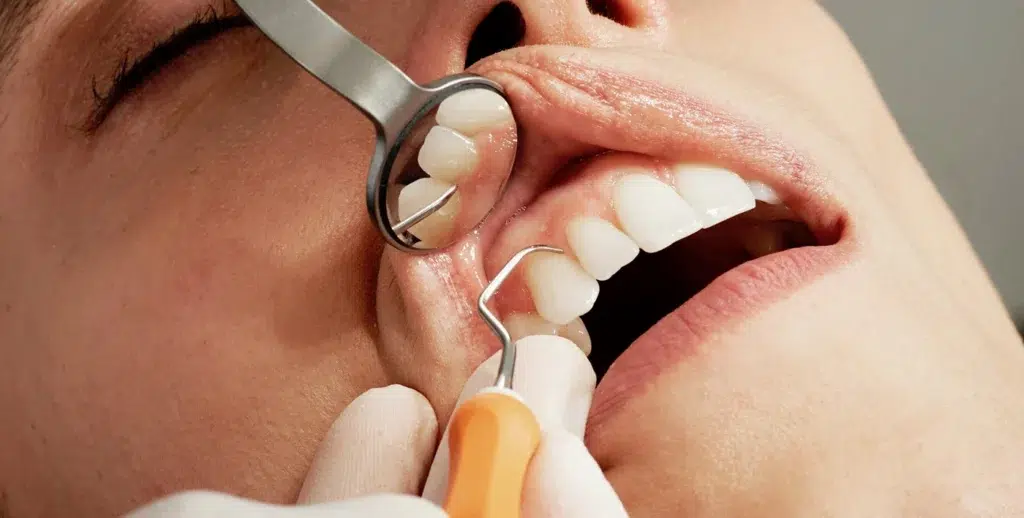
Gum Recession Causes
Treating Gum Recession
Our experienced team provides comprehensive assessments to determine the extent of gum recession and its underlying causes. We use advanced diagnostic tools and techniques to evaluate your dental health thoroughly, ensuring we can offer the most effective personalized treatment options tailored to your needs.
Treatment options for gum recession vary based on the severity of the condition and the underlying causes. In cases where recession is minimal, improved oral hygiene practices and regular dental cleanings may be sufficient to prevent further recession. However, more severe cases may necessitate surgical procedures.
- Scaling and Root Planing: This non-surgical procedure involves deep cleaning teeth and roots to remove plaque and tartar buildup, which can help promote gum reattachment.
- Gum Grafting: For more significant cases of gum recession, we recommend gum grafting, a surgical technique that involves taking tissue from another area of the mouth or using donor tissue to cover exposed roots and restore the gum line.
- Pinhole Surgical Technique: This minimally invasive procedure allows for the repositioning of gum tissue without the need for grafting, contributing to a quicker recovery time and less discomfort for the patient.
In addition to traditional treatment options, we also recognize the role of lifestyle factors in oral health. Smoking, poor nutrition, and stress can exacerbate gum recession and adversely affect healing. Our team encourages patients to adopt healthy habits, including a balanced diet rich in vitamins and minerals, stress management techniques, and smoking cessation programs, all of which can contribute to improved oral health and overall well-being.

